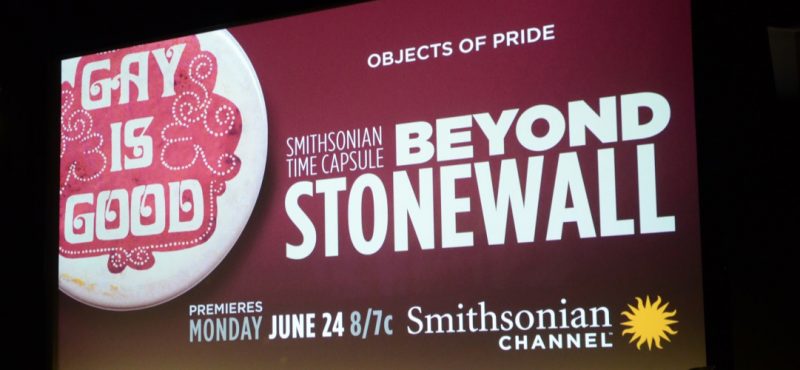As we celebrate Pride Month, it’s worth noting that this week marks the 50th anniversary of the Stonewall Riots which started on Christopher Street in New York City and spread around the country and shaped the LGBTQ+ movement as it is known today. Stonewall, and the protests that followed, gave rise to the term “Pride,” the rainbow flag, and annual marches in New York City and around the United States. However, while the Stonewall Riots catalyzed change, the event was by no means the beginning of the LGBTQ+ movement. The team at Smithsonian Channel recognized this and set out to explore the experiences of gay individuals and activists in their latest documentary, “Beyond Stonewall,” which premiered on Monday, June 24th,and re-airs Friday, June 28th on the Smithsonian Channel.
“It was our goal to shine light into the underexposed stories from the past,” said Linda Goldman, executive producer of Mission Critical programming at Smithsonian Networks. “We wanted to inspire those who come after us by those who came before us, bringing stories of LGBTQ+ individuals out of the shadows and into the light.” By looking at primary sources that date as far back as the early 1800s to as recently as the passage of the Hate Crimes Prevention Act of 2009, the Smithsonian Channel unearthed stories that had previously been cast in darkness.
Physical Objects in Storytelling
To produce the documentary, the Smithsonian team enlisted the help of archivists, including Franklin Robinson, a Smithsonian scholar. Through these objects, Robinson and other scholars demonstrate how photographs, journals, and letters, provide clues that illuminate the stories of individuals and the history of the LGBTQ+ community.
“Beyond Stonewall” is ripe with human stories that are tied to objects and artifacts. The documentary features an original copy of Walt Whitman’s poetry – words that shaped the narrative of the American experience. It showcases the looms and pottery of an indigenous Zuni transgender artist who came to Washington, DC in the mid-1800s. “Beyond Stonewall” also provides a glimpse into the real life of Matthew Shepherd through objects from his home and childhood. Shepherd’s tragic death in Laramie, WY would set the stage for further LGBTQ+ advocacy work and the Hate Crimes Prevention Act of 2009.
Robinson also came across a series of love letters written during WWII to a man named Philip St. George – a multi-racial native of Richmond, VA who liked to dress in drag – from other male members of the military. The letters had been abandoned on the street when St. George passed away in New York City. “The Philip St. George letters were so indicative of that [LGBTQ+] community,” Robinson said, “I didn’t want this man to die without a story, I wanted to give him a way to come out of the archival closet.” And in “Beyond Stonewall,” Robinson and the Smithsonian Channel team have done just that.
These artifacts make the narratives more tangible and moving, placing these formerly hidden experiences front-and-center in American history.
Sharing All of American History
Ultimately, the artifacts and objects featured in “Beyond Stonewall” are part of a larger display at the Museum of American History. If the Stonewall Riots marked a pivotal moment for the LGBTQ+ movement, then the documentary marks another and brings an important piece of American history into the mainstream.
